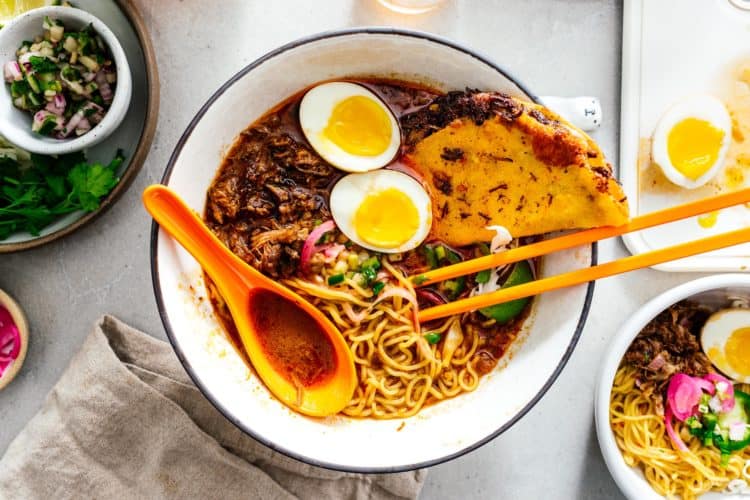
For a lot of people, ramen is just a quick go-to snack or meal that can be readied in a matter of minutes and fill your belly for just long enough to get through a period of the day when you really need that boost. It’s kind of funny to learn that this was the initial way it was looked at when it was created. But the manner in which it was created is definitely complicated enough when discussing the pH scale and how it matters in terms of making the noodles, storing them, and cooking them. What most people know about ramen is that it’s cheap, can be bought in bulk, and lasts for a good deal of time. It’s also something that can go with a number of different items since it can take on a number of different flavors that help to make it a more complete meal. Seriously, a lot of folks can make a full meal out of a bowl of ramen by adding a bit of meat, vegetables, and a few other items that might give it a bit more pep.
In a big way, this is a very cheap meal that can satisfy a person in a very short amount of time, but it’s also become something that has been turned into a delicacy in America since there are restaurants that specialize in ramen and are able to cook up exquisite meals that a lot of people can’t get enough of. To hear that the idea came from China though is pretty interesting since a lot of people might not have realized this. Pretty much everything to do with ramen came from China apparently, but the Japanese have put their own spin on it over the years since its introduction, and have introduced this dish in many ways that have allowed the dish to become such a specialty that people are willing to go to school to learn about it.
How ramen is consumed in Japan versus how it’s consumed in America though is also interesting. In Japan, it’s basically a meal that one orders and consumes quickly in order to get on with their day. In America, it’s consumed slower as people consider it to be a dish that deserves more time and respect considering all the effort that goes into it. The funny thing is that a lot of people in America see it as a quick meal as well since it can be cooked on the stove or in the microwave and consumed quickly enough that one can eat it for lunch and then get back to work or be on their way soon after. It’s one of the meals that many people in college tend to stock up on since it’s not hard to fix and it’s nice and cheap, as it’s only a quarter in some places and ten cents in others. The only downside of eating ramen all the time is that it does contain a seriously big dose of sodium that could affect one’s health after a while if it’s consumed too often. Too much sodium isn’t good for the body after all, though some people don’t get this lesson until it’s too late.
There are plenty of folks that don’t really care for ramen since the noodles do tend to get a bit old after a while and it is nice to take a break from the meal every now and then. But in terms of being healthy, it’s not the best thing for one to eat all the time, but the convenience is hard to beat. Unlike many other meals, all one needs is a bowl, something to eat with, water, and something to heat the meal with. It’s not such a difficult meal that it can’t be done by anyone since the prepackaged noodles and powder that comes with it are easy to put together. Some people actually crush the noodles up as much as they can and then use them to sprinkle over other meals, along with the powder, which is kind of odd, but it does happen. To be fair though, the idea of eating ramen all the time might not be appealing, but it is a way to cut down on costs, and there are many ways to make it more appetizing.
The individual packets are apparently two servings, which is easy to see, but it goes without saying that the average person can put away a single pack on their own, even with additions to the noodles. Some might want to say that Americans have an issue when it comes to portion sizes, but after making one pack of ramen noodles it’s hard to argue that one pack can feed more than one person unless one is talking about small children.
 Follow Us
Follow Us




